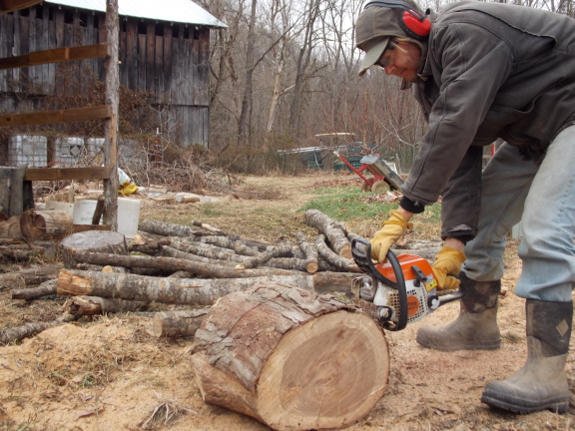
Assessing dead trees for firewood

Mark cut our gifted hickory log
in half and then split it up into a full wheelbarrow-load of
firewood. Our movie-star neighbor told me that he'd cut down the
tree just last week, but that it had been standing dead in the forest
for a long time before that, so the wood was bone dry. He wasn't
kidding! The hickory wood was good enough to act as kindling, but
also held a flame well --- a great boon for our current cold
spell. (It's much snowier at the moment than in the photo above,
which was taken Monday.)
We've had varying amounts
of success with cutting dead trees and using the wood immediately, and
I'm starting to understand the differences. The oak we were cutting up a week or so ago
had only been dead for a year and was reclining instead of standing
vertically, both of which meant the wood is likely to stay wetter.
On the other hand, a standing dead tree that is starting to lose its bark
is probably dry enough to cut and burn now. Live and learn!
I've got my eye on an elm that perished over the summer not far from
our core homestead, but it looks like that will be firewood insurance
around 2016.
Want more in-depth information? Browse through our books.
Or explore more posts by date or by subject.
About us: Anna Hess and Mark Hamilton spent over a decade living self-sufficiently in the mountains of Virginia before moving north to start over from scratch in the foothills of Ohio. They've experimented with permaculture, no-till gardening, trailersteading, home-based microbusinesses and much more, writing about their adventures in both blogs and books.
Want to be notified when new comments are posted on this page? Click on the RSS button after you add a comment to subscribe to the comment feed, or simply check the box beside "email replies to me" while writing your comment.
- Remove comment
- Remove comment
- Remove comment
